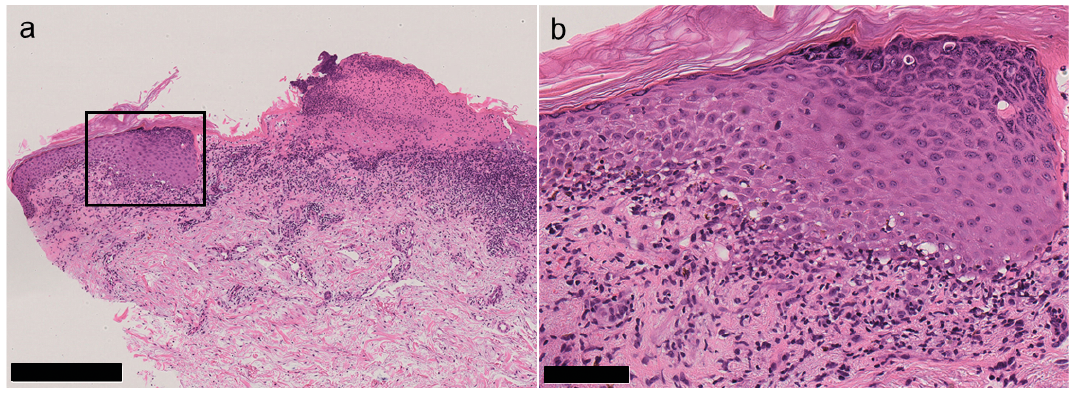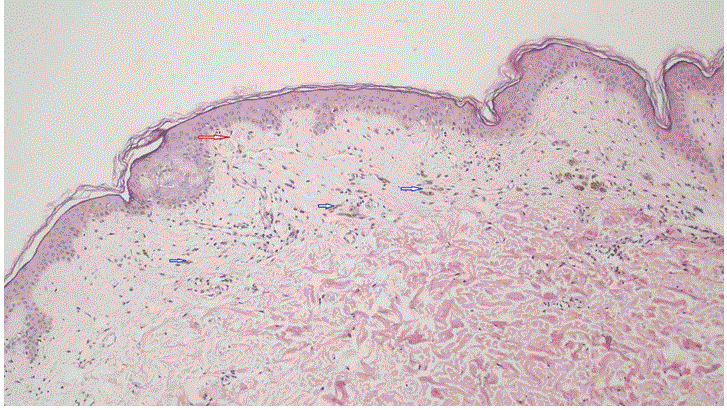Lichen Planus, often abbreviated as LP, is a chronic inflammatory condition that affects the skin, mucous membranes, hair, and nails. This condition can cause discomfort and distress due to its persistent nature and visible symptoms. While it is not contagious or life-threatening, understanding its causes, recognizing its symptoms, and exploring effective treatment options are crucial for managing this condition effectively.

What is Lichen Planus?
Lichen Planus is an autoimmune disorder where the immune system mistakenly attacks the body’s own cells. It manifests as small, flat-topped, polygonal bumps that can appear on various parts of the body, most commonly on the wrists, ankles, lower back, and inside the mouth. The exact reason behind this immune response remains unclear, but several factors have been identified as potential contributors.
Causes of Lichen Planus
The precise cause of Lichen Planus is still unknown, but researchers believe it may result from a combination of genetic, environmental, and immune-related factors. Below are some possible causes:
- Immune System Dysfunction: In Lichen Planus, the immune system becomes overactive and targets the skin and mucous membranes, leading to inflammation and the characteristic lesions.
- Genetic Predisposition: Some individuals may inherit a susceptibility to developing this condition, especially if there is a family history of autoimmune diseases.
- Viral Infections: Certain viruses, such as hepatitis C, have been linked to the development of Lichen Planus in some cases.
- Medications: Certain drugs, including those used to treat heart disease, arthritis, and high blood pressure, may trigger Lichen Planus as a side effect.
- Allergic Reactions: Exposure to chemicals, dyes, or metals like gold or mercury may provoke an allergic reaction that leads to Lichen Planus.
Symptoms of Lichen Planus
The symptoms of Lichen Planus vary depending on the affected area of the body. However, some common signs include:
- Skin Lesions: These are typically small, shiny, reddish-purple bumps with a flat top. They may appear in clusters and are often itchy.
- Mouth Sores: White, lacy patches or open sores can develop on the inner cheeks, gums, tongue, or lips. These sores may cause pain or burning sensations, especially when eating or drinking.
- Nail Changes: Nails may become thin, split, or develop ridges. In severe cases, nail loss can occur.
- Hair Loss: When Lichen Planus affects the scalp, it can lead to patchy bald spots known as Lichen Planopilaris.
- Genital Symptoms: In women, Lichen Planus can affect the vulva, causing redness, swelling, or painful intercourse. In men, it may lead to irritation or scarring on the penis.
Diagnosis of Lichen Planus
Diagnosing Lichen Planus involves a thorough evaluation by a healthcare professional. Since its symptoms can mimic other conditions, accurate diagnosis is essential for proper treatment. Here’s how doctors diagnose this condition:
Clinical Examination
A dermatologist will examine the affected areas and review the patient’s medical history. The distinctive appearance of the lesions often provides initial clues about the condition.
Biopsy
In cases where the diagnosis is uncertain, a biopsy may be performed. A small sample of the affected tissue is removed and examined under a microscope to confirm the presence of Lichen Planus.
Additional Tests
To rule out underlying causes or associated conditions, additional tests may be recommended:
- Blood Tests: These can help identify infections like hepatitis C or check for markers of autoimmune activity.
- Allergy Testing: If an allergic reaction is suspected, allergy tests may be conducted to determine specific triggers.
- Hepatitis Screening: Given the link between hepatitis C and Lichen Planus, screening for this virus might be advised.
Treatment Options for Lichen Planus
While there is no cure for Lichen Planus, treatments aim to alleviate symptoms, reduce inflammation, and prevent complications. The choice of treatment depends on the severity of the condition and the areas affected. Below are some common approaches:
Topical Treatments
For mild cases affecting the skin, topical medications are often prescribed:
- Corticosteroid Creams: These anti-inflammatory creams help reduce itching and swelling. They are applied directly to the affected areas.
- Tacrolimus or Pimecrolimus Ointments: These non-steroidal ointments are alternatives for patients who cannot use corticosteroids long-term.
Oral Medications
When Lichen Planus affects larger areas or internal surfaces like the mouth, oral medications may be necessary:
- Antihistamines: These drugs help relieve itching and discomfort caused by the lesions.
- Systemic Corticosteroids: In severe cases, oral corticosteroids may be prescribed to control widespread inflammation.
- Immunosuppressants: Drugs like methotrexate or cyclosporine may be used to suppress the overactive immune response.
Phototherapy
Phototherapy involves exposing the skin to ultraviolet light under medical supervision. This treatment can help reduce symptoms in patients with extensive skin involvement.
Lifestyle Modifications
Adopting certain lifestyle changes can complement medical treatments and improve overall well-being:
- Avoid Irritants: Steering clear of harsh chemicals, fragrances, and allergens can prevent flare-ups.
- Maintain Good Oral Hygiene: For those with oral Lichen Planus, regular brushing and flossing can minimize discomfort and prevent secondary infections.
- Stress Management: Stress can exacerbate symptoms, so practicing relaxation techniques like yoga or meditation may be beneficial.
Treatment for Specific Areas
Different areas of the body require tailored approaches:
- Mouth: Topical corticosteroids in gel or rinse form are often used for oral lesions. Avoiding spicy, acidic, or rough foods can also reduce irritation.
- Nails: Regular monitoring by a dermatologist is important to prevent permanent damage. In severe cases, systemic treatments may be required.
- Scalp: Early intervention with medicated shampoos or topical solutions can help manage hair loss and inflammation.
Emerging Therapies
Research into new treatments for Lichen Planus is ongoing. Some promising therapies include biologic agents that target specific components of the immune system and laser treatments for resistant cases.
Managing Lichen Planus requires patience and collaboration between patients and healthcare providers. By staying informed and proactive, individuals can find relief and maintain their quality of life despite this challenging condition.





